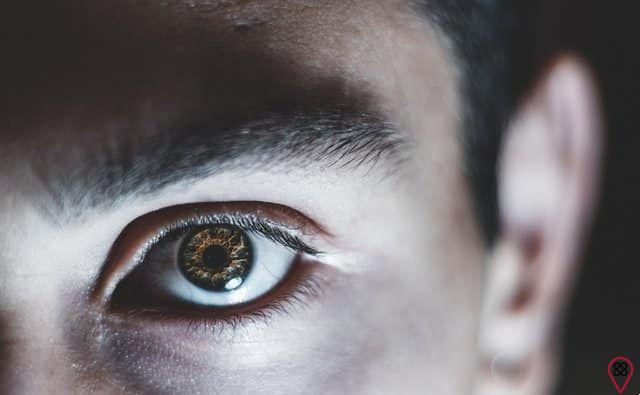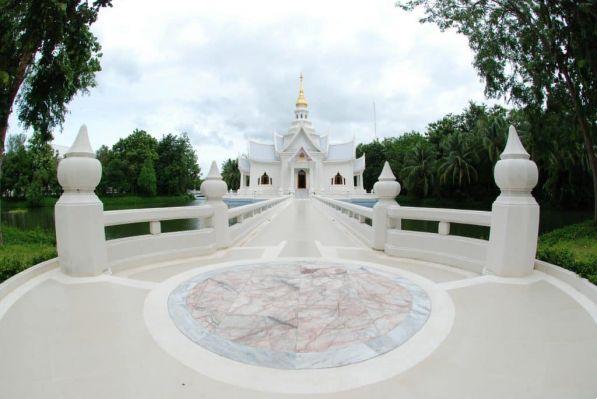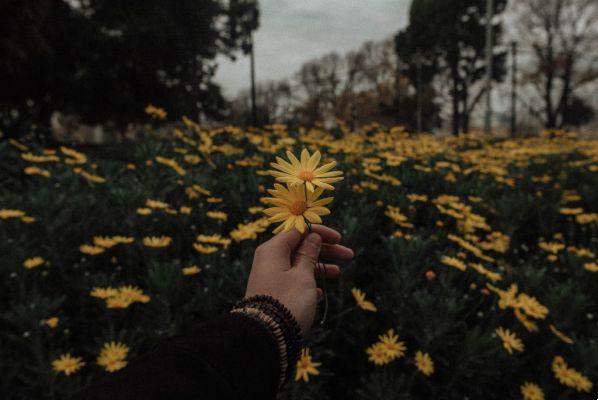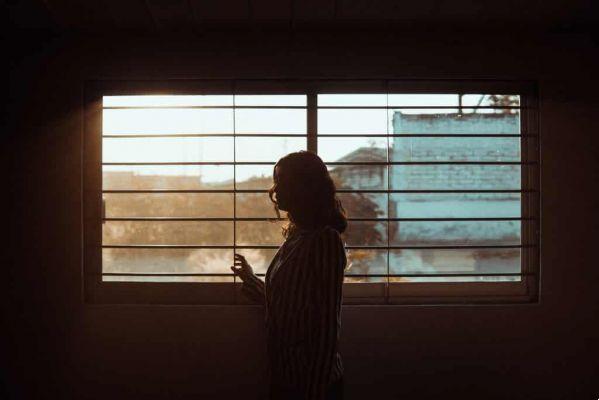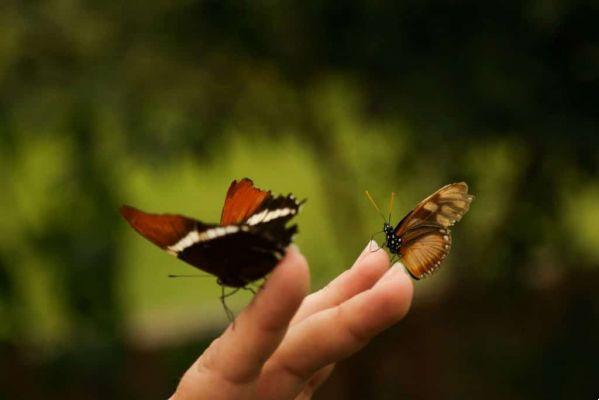Zen Buddhism arrived in Japan around the twelfth century, and with it came “matcha”, which is nothing more than powdered green tea. Monks drank this tea to stay awake during nightly meditations. Over time, this habit became a philosophy of life through the “Chado”, which means “Way of Tea”, concretized in the ritual “Chanoyu”, the famous Tea Ceremony.
In the beginning, the practice of Chado was aimed only at men; only at the end of the XNUMXth century was the “Camino do Chá” open to women. A master from Urassenke introduced and profoundly taught this art to the widows and orphans of the Sino-Japanese War so that they could find sustenance and survive as tea teachers and instructors. From that moment on, women began to teach in temples and schools. In a short time, Chado became known by all of society.
The main purpose of this ritual is to achieve tranquility, calm and peace in a simple cup of tea, and the masters are faithfully dedicated to spreading this philosophy of tea throughout the West. According to the masters, the Tea Ceremony ritual promotes superior peace. According to Rikyiu, the main principles of the tea ceremony are:
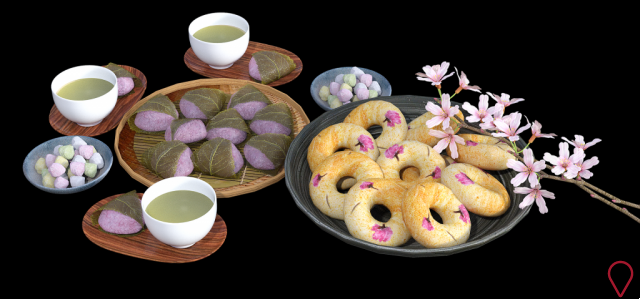
Harmony
Before tea, the guest is offered a meal according to the season, because harmony is the result of the interaction of people, the food that was served and nature.
Respect
Respect is the principle that evidences the sincerity of a heart. Human relationship recognizes that nature has dignity and importance, as well as its own being.
Pureza
According to Rikyu, the act of putting one's own being in order is essential, as are the very tasks that the tea service provides: cleaning and putting in order. The act of simply cleaning is the foundation for organization.
Tranquility
Tranquility is the consequence of the 3 principles of the daily practice of the ceremony and certainly the high point of satisfaction!
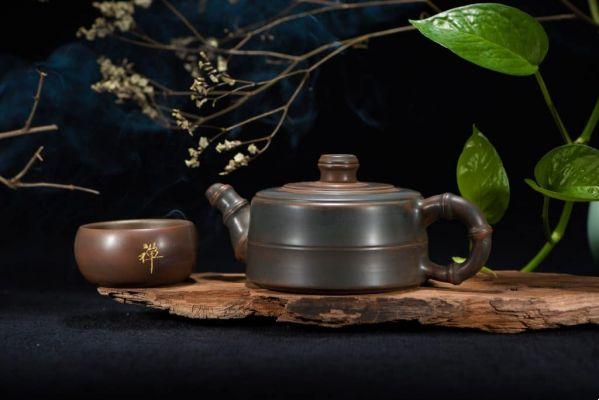
What are the items needed for the tea ceremony?
There are four essential items for preparing tea: a bowl that has a wide mouth, 1/4 cup of water boiled at 70 degrees, a small spoon of sifted matcha and a chasen. It is common that people do not have a whisk (chasen), so know that it is possible to use a minimixer instead, but it is recommended that the preparation of the same is done in a tall glass.
Japanese green tea (matcha) must be blended and mixed with hot water until a creamy foam is obtained, which takes about 20 seconds.
If you want to know how a tea ceremony works, know that in each ritual there are specific items chosen carefully so that the feeling of the host who conducts the ceremony is transmitted to the guests. It lasts about 4 hours and is done in 4 sessions:
First session:
Five guests gather in a room, where a meal called “kaiseki” is served. The host takes them to the tea room, along a path where everyone washes their hands and mouth in a stone basin of water. As the entrance to the room is small, the guests have to crawl, showing great humility.
Upon arriving in the room, each person kneels in front of the “tokonoma” and bows. After that, the guests contemplate some objects, sit next to the host, exchange greetings and soon the “kaiseki” is served, accompanied by sweets.
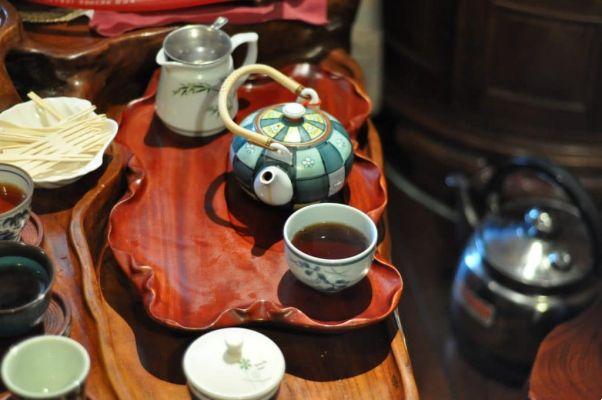
Second session:
It is the time when guests take a break, known as “nakadachi”, in which they gather in a garden near the room.
Third session:
Called “Goza-iri”, this is the main part of the ceremony, when tea is served. A gong sounds five to seven times to mark the beginning of the ceremony. The guests repeat the purification ritual in the stone basin and enter the room.
After again observing some specific objects and admiring the beauty of the simple, the host places 3 matcha shells for each one. He then mixes the drink with a utensil similar to a small broom, until the consistency of the liquid is close to that of pea soup.
Bowing again, the guest holds the bowl in his left hand and supports one side with his right hand. As he takes a sip, he praises its taste and then takes two more sips. He cleans the place in the bowl where he drank with the “kaishi” and passes it on to the other guest, who will repeat the actions of the previous one. When all the guests have finished the ritual, the bowl is returned to the first one, who returns it to the host.
Fourth session:
In the last phase, the ceremony is done with “usucha”, prepared with different plants that promote a more frothy mixture. In this ceremony, tea is made individually for each of the guests, and everyone has to drink their own portion. At the end of the session, the host bows, signaling that the ceremony has come to an end.
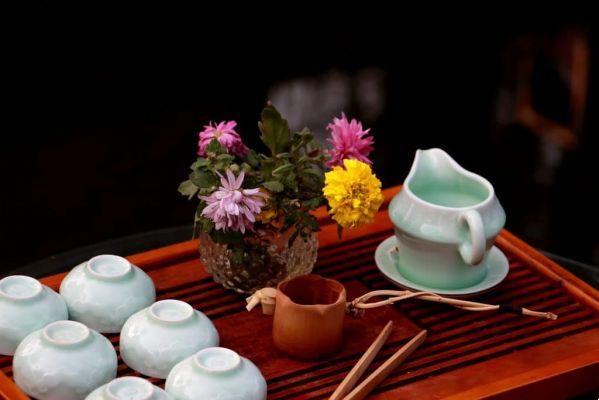
Benefits and lessons learned from the practice of the Tea Ceremony
A tea can provide different sensations to people. He has a great affective power for promoting encounters and a sensorial power that involves the senses of the human body. In addition to these factors, it ends up becoming a means of interaction between cultures: when we drink Japanese or Indian teas, for example, we automatically connect with the tradition and culture of these countries.
This type of ritual promotes a learning path for a great spiritual evolution. Participating in this ceremony makes an individual learn to analyze in more detail what is presented to him, raising his soul to what is done and proposed.
In the rush of the day, we do ordinary activities without paying attention to them. We often do this with the taste of food. The rush makes us complete actions simply out of obligation or routine.
The ceremony makes each being who participates in it feel special and gets closer to the values taught there. The practice has the power to benefit people due to its humanistic sense, which encourages closeness and cordiality in its rituals.
In España, performing practices such as the Tea Ceremony makes participants understand their place in the world based on inner peace. Union and self-knowledge are great consequences of drinking specific teas in rituals that provide cultural enrichment.
As you already know, each session allows the feelings proposed in the 4 principles of the act and makes the ceremony a moment of reflection and deep connection with the spiritual side of each one, as well as of a group. The communion with the Universe that is created in the act of dedicating oneself to this moment makes the worship of simplicity emphasize what is genuine in every human being.
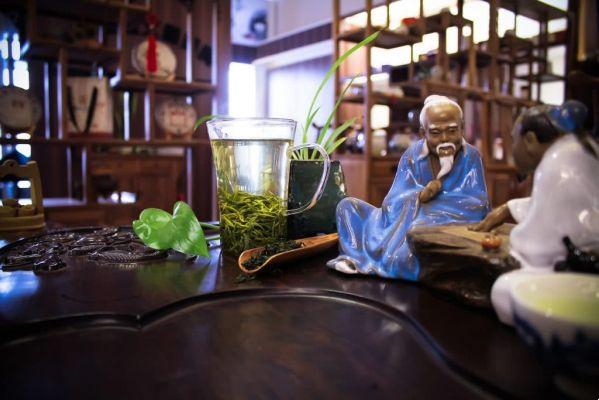
Rituals to practice the ceremony
There are several ways of holding a tea ceremony, which vary depending on the school of each host. You can look for a tea house to do the ritual in the original way. Learn a little more about the “Sukiya”:
Cha houses (Sukiya)
Surely there is a tea house somewhere in your city. It is very likely that she is in a wooded place and close to nature. The houses consist of a tea room, called a cha-shitsu (usually near a garden), a preparation room, called a mizu-ya, a waiting room, yoritsuki, and a garden path that will take the participants to the entrance of the house, called roji. These houses are faithful to the oldest practices and can provide you with a unique experience!
It is worth emphasizing that you need to be dressed discreetly for this ritual! Men usually wear a kimono made of silk, with white stockings, while women wear an emblazoned kimono. Bring a small, folding fan and small paper napkins.
You may also like
- Discover the Cacao Ceremony – The Nectar of the Gods
- Know what happens in your brain in a meditation
- Find out more about the power of teas
To give you a better “north” about the ritual, in a nutshell, know that you need to understand that the tea ceremony consists of heating the water and preparing it, and then drinking it correctly.
If you want to familiarize yourself with the idea before heading to a house where a host will welcome you with all the hospitality that the practice grants, gather 4 friends and practice preparing tea with a spiritual purpose.
Be receptive and bow to the simple existing in the world the moment you are with them. Drink the tea with an intention of tranquility and raise your mind to the higher.






